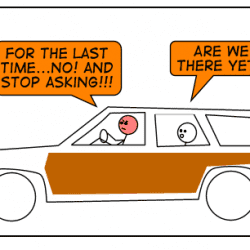(Following is a guest post by Andy Campbell, blogger at The Crooked Mouth and professor at George Fox Evangelical Seminary.)
When I worked as a college minister, and later a pastor for small groups at a large suburban church, I slogged through my fair share of DVD-based group curricula. Some were good, most were not. They tended to fall into two categories: the informational and the inspirational. The former is often used to set or reinforce doctrine, whereas the latter serves to make the participants feel better about themselves, their church, and their God. There is a place for these series, to be sure. The group that is often overlooked and underserved, however, are the questioners. They are skeptical of rigid doctrine and cynical toward fluffy, feel-goodery.
I recently had the opportunity to review a small group film-based resource called “Animate.Faith” from SparkHouse. The presenters include a few emerging church guys (Brian McLaren, Shane Hipps, Mark Scandrette), an Episcopalian professor (Lauren Winner), and ministers from the United Church of Christ (Lillian Daniel), the Presbyterian Church (Bruce Reyes-Chow), and Lutheran Church (Nadia Bolz-Weber), a motley crew to be sure.
Animate.Faith is broken into seven sessions: God, Religion, Jesus, Salvation, Cross, Bible, and Church. Each film short is about 10 minutes long and is a combination of a direct address to the camera and simple sketches that visually emphasize key points and concepts. SparkHouse was surely inspired by the popular RSA Animate illustration of TED Talks, but these films feature less clutter than RSA, resulting in a cleaner presentation, overall.
The strength of the series is in the number of voices present; a different person leads each session. This stands in contrast with most other series, which revolve around the teaching of a single individual. Yet SparkHouse missed an opportunity by only including one person of color among the seven presenters.
The accompanying book for participants includes brief bios of each presenter and a sketchnoted summary of each talk with whitespace for reflection. It is beautifully crafted and visually striking. Bound in a simple black cover, it looks and feels more like a journal than one of those oversized, gaudy workbooks that come with most other small group curricula. I would certainly feel comfortable taking this journal out in public places to do a little reflection and writing.

My only critique with the journal is the font and type stylization. It uses an all-caps sans serif font, similar to Century Gothic, but a bit wider. Each line of type is set between a faint baseline and cap height line, as if the text on the pages of the journal is still being drafted. Combined with the hand drawn sketches, it gives the feel that even what is on the pages of the journal is impermanent, non-authoritative, more suggestive than definitive. I get it, and it is consistent with what they’re wanting to do with the series, but visually it is hard on the eyes.
The curriculum also includes a Facilitator’s Guide. It is an 8 ½ x 11 expansion of the participant’s journal. It contains tons of ideas, questions, activities, and talking points for each session, often pointing to additional outside resources for further exploration on each session’s topic.
At times, it is easy to become overwhelmed by the plethora of extra information presented in the sidebars, footnotes, callouts. Yet, the guide truly is oriented toward helping a group facilitator facilitate as a guide on the side, rather than a sage on a stage. Someone with very little experience leading small group discussions could pick up this book and, with some advance preparation, lead a productive conversation.
This series isn’t going to be for everyone, though. It offers few answers, instead raising questions about God, Jesus, the Bible, the Church, and how we understand  salvation, the cross, and spirituality. The series doesn’t toe doctrinal lines, it crisscrosses them.
salvation, the cross, and spirituality. The series doesn’t toe doctrinal lines, it crisscrosses them.
There are bound to be things in the sessions that spark controversy and disagreement in group discussions. For that reason, it occupies a much need space in the world of small group resources. This series is for those who have questions and want conversations, not propositions.
The series is not inexpensive. The DVD with all seven sessions will run you $70, the Facilitator’s Guide is $20, and each journal is $15. For a small group of 8, this seven-week series will run you $280. Discounts are offered for bulk purchases.
The target market seems to be churches who have a budget for purchasing small group curricula. In this respect, it’s on par, if not slightly cheaper with the pricing of many other small group film-based kits.
It would be nice if the materials were available as electronic resources. With the ubiquity of streaming web content and more and more people going paperless, substituting tablets for books, it seems sensible to give people the option of going all-digital, especially if they were able to save a little money that way.
Despite the few shortcomings of this series, it occupies a much needed space in small group curricula. It offers the promise to create space for conversations of consequence, ask questions, wrestle through disagreements, seek peace, and ultimately, animate one’s faith.











